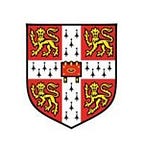The India specialist who spent his gap year in a Tibetan monastery
Growing up in Edinburgh, Edward Anderson thought he might become a chef. An interest in Tibet led to an enduring fascination for neighbouring India with its diversity of cultures. The rise of nationalism and the politics of migration both feature in his current research into the world’s largest democracy.
When I was 18 I spent six months in a Tibetan Buddhist monastery in India. During a gap year between school and university, I signed up with a charity that was helping to support Tibetan refugees. They organised for me to join some Tibetan monks in the Himalayas, near Darjeeling. The monastery was on a mountainside and swathed in mist.
I was supposed to be teaching the monks English. I’d done a TEFL [Teaching English as a Foreign Language] course but I certainly wasn’t the most enlightening teacher. Half way through my visit, the monks needed to recite a mantra 10 million times — and English classes were suspended. I was given a month off and went travelling on my own. When I got back, the monks had exceeded their target.
Exploring India by bus and train, I encountered staggering diversity — both of people and ideas. Looking back, this experience and my interest in political activism put me on the pathway to become an academic. But the trip was a fairly inauspicious start to my relationship with South Asia — it ended when I was airlifted out of the Himalayas after contracting pneumonia.
The scale and pluralism of India are striking. I’ve now been going there regularly for nearly 15 years. I’ve travelled from Ladakh, high in the mountains of Jammu and Kashmir, to Kerala in the very southern tip of the country. But I feel I’ve only scratched the surface.
I did a degree in Politics and Philosophy at Leeds University. While I was there I continued to pursue my interest in Indian politics and was much encouraged by my lecturers, notably David Hall-Matthews and William Gould. I did my undergraduate dissertation on Indian communism.
Jawaharlal Nehru University is where I went to do a Master’s. JNU is an incredibly vibrant place to study and Delhi is an extraordinary city. I learnt just as much outside classes as I did in them. I drank chai and had lively political discussions with classmates till the early hours in the little canteens known as dhabas — and played for the British High Commission football team.
Today my research focuses on Indian nationalism — both in India itself and the worldwide diaspora. During the past few years I’ve observed the Hindu nationalist movement rise from being in opposition to becoming a dominant force in contemporary politics.
My research also relates to the study of migration. My work has shown how and why Indians overseas have maintained and developed deep-rooted, significant relationships with the homeland. This is a complex and multidimensional dynamic: the politics of the Indian diaspora influences both Indian and British society.
India is the world’s largest democracy comprising a sixth of the world’s population. Its politics are incredibly vibrant and diverse. With the internet, the world is connected as never before. For a political historian like me social media is a fantastic way to understand contemporary politics and social movements, but can also present huge challenges, most notably the ephemeral nature of the material.
Cambridge has historic links with India — some of them highly controversial. It’s where many colonial administrators were educated or spent their later years. One of the most notorious was Thomas Babington Macaulay, a historian and politician whose derision of Indian civilisation made his name shorthand for the arrogance and viciousness of British imperialism.
Some of the leaders of India’s independence movement spent their formative years here. Among them are Jawaharlal Nehru, Subhas Chandra Bose and Aurobindo Ghose. A number of modern India’s most famous scholars also have Cambridge connections: the Nobel Prize-winning economist Amartya Sen studied here in the 1950s and returned later to become Master of Trinity College.
Eminent academic Christopher Bayly helped to consolidate Cambridge’s reputation for global history. His scholarship on British colonialism and Indian politics was what drew me to Cambridge to take a second Master’s course. I went on to complete a PhD in the History Faculty under the inspirational supervision of Joya Chatterji. I’ve been here ever since.
The Centre of South Asian Studies, where I’m based, is a fantastic hub for research. I teach on the MPhil course. Each year we have around a dozen students from a wide range of backgrounds. They’re engaged and hard-working — and each of them brings something different and valuable to the group.
I never thought I’d be an academic. If you’d asked me aged 12 what I was going to be I might have said a chef. I loved cooking from a young age, and still do. I didn’t focus on academic work as much as I could have at school. I was more interested in running around and being a nuisance.
Sport has always been an important part of my life — it’s a good way to let off steam if you’ve spent the day sitting in a library or lecture theatre. I play football in the winter and cricket in the summer — both to an equally abysmal standard. The Cambridge colleges have wonderful cricket pitches, some with thatched pavilions. They’re hidden gems.
This profile is part of our This Cambridge Life series.
